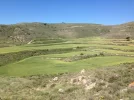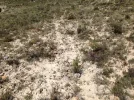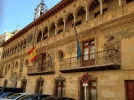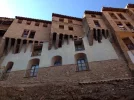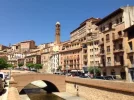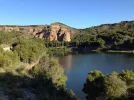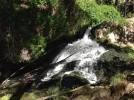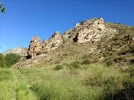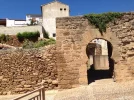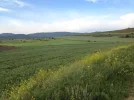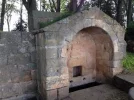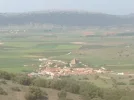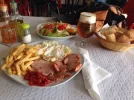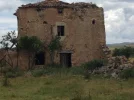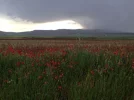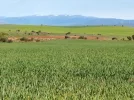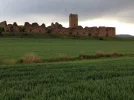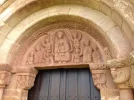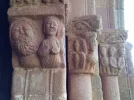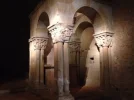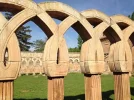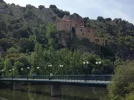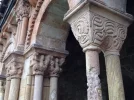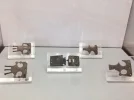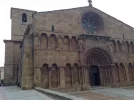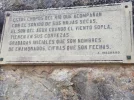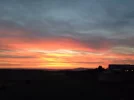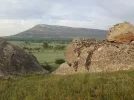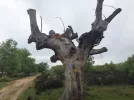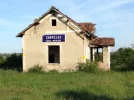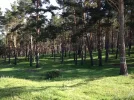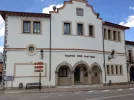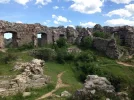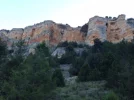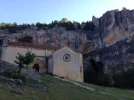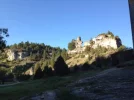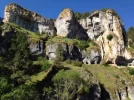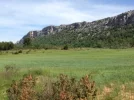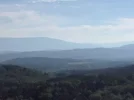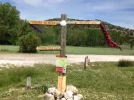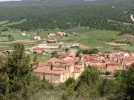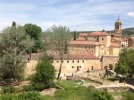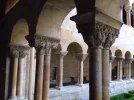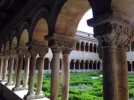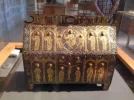I started this Camino in Riumar on the Ruta del Ebro and have a thread on my experience and the stages here. The Camino Castellano-Aragonés starts two days after Zaragoza on the Ebro in Gallur, and that’s what this thread details. I ended the Castellano Aragonés in Santo Domingo de Silos and from there walked on to Covarrubias to walk the San Olav in reverse to Burgos. It was a great “combo camino” as some forum members call these things!
I had a GPS and was very glad I did. I will point out the places where I would have been lost without it. I don't particularly like the GPS but have learned to use it and try to keep its presence to a minimum. As a result, I wind up getting "lost" more often than I would if I always had it on. But here's how I have made my peace with it. I have it in my pack side pocket. I rely on the arrows. But if at some point I haven't seen an arrow in a while, or if I'm at an intersection with no indication where to go, I pull it out and look at it. I just don't want to be that person with her head in the GPS as she walks a lovely camino.
The Camino Castellano-Aragonés starts in Gallur, breaking off from the Ruta del Ebro. In Gallur, the Ruta del Ebro heads northwest and the Castellano-Aragonés heads in a more westerly direction. According to mundicamino, it is 237 kms until its ending spot in Santo Domingo de Silos. It is a really fine camino. From Santo Domingo, you will go to Burgos. You can either take the Ruta de la Lana for two days, or take the Camino San Olav, which is a three day (HIGHLY recommended) alternative into Burgos.
Day 1 -- Gallur to Borja (28). (I had walked into Gallur the day before from the very nice albergue in Torres de Berrellén. Gallur has a nice albergue on the top floor of a building to the left of the train station. 10 €. You can contact the ayuntamiento via email and they will alert the hospitalera that you are coming. The lower floor is a bar/restaurant type place, and the woman in charge has to come down and open up for you in the morning. She doesn't mind coming down early. If you leave the elevator on the first floor and get out before she is there, alarms will go off so be sure to set the time with her carefully and not to come down until she has arrived and turned off the alarms. On Sabine's recommendation (I think), I had a delicious meal in the Hotel El Colono.)
Gallur to Borja was a great day, with two long agricultural track stretches, with the town of Magallón in the middle. Magallón has part of a mudejar church still standing, and a Renaissance church at the top of the town. Several cafés. Magallón to Borja is definitely not the straight line route, but rather a beautiful loop through vineyards, some fruit groves, some badlands type scenery. It is really really nice. I saw one guy on a tractor the whole time.
This is a stage that's easy on the feet, not too much elevation (mundicamino says it's about 400 m total ascent, all very gentle). There was one bad highway crossing, and a flooded underpass that I just had to get through. There was a brisk wind blowing at times, the locals told me it's from the Moncayo Mountains, and its name is the Cierzo (?). In late May it was cool and pleasant, but I'm sure that it's a killer in the summer.
In Borja I slept in the Pensión Peñas de Herrera, not in the old town, but in a residential area a bit outside. Actually, the pension is the second floor of a house, I think there are 3 or 4 rooms. 25€ with shared bath. Had a great 17€ menu in Bóveda del Mercado, on Alan's recommendation. I even wrote down what I ate because it was so good -- alcachofas con jamón, solomillo con salsa Roquefort, homemade cuajada cake and the local Borsao wine (kind of reminded me of Toro wine, but I'm no expert). Borja had a colegiata to visit, a nice square, nothing spectacular, but pleasant.
I am having trouble figuring out how to upload pictures but will ask for help on the forum and hope to add some soon. Buen camino, Laurie
I had a GPS and was very glad I did. I will point out the places where I would have been lost without it. I don't particularly like the GPS but have learned to use it and try to keep its presence to a minimum. As a result, I wind up getting "lost" more often than I would if I always had it on. But here's how I have made my peace with it. I have it in my pack side pocket. I rely on the arrows. But if at some point I haven't seen an arrow in a while, or if I'm at an intersection with no indication where to go, I pull it out and look at it. I just don't want to be that person with her head in the GPS as she walks a lovely camino.
The Camino Castellano-Aragonés starts in Gallur, breaking off from the Ruta del Ebro. In Gallur, the Ruta del Ebro heads northwest and the Castellano-Aragonés heads in a more westerly direction. According to mundicamino, it is 237 kms until its ending spot in Santo Domingo de Silos. It is a really fine camino. From Santo Domingo, you will go to Burgos. You can either take the Ruta de la Lana for two days, or take the Camino San Olav, which is a three day (HIGHLY recommended) alternative into Burgos.
Day 1 -- Gallur to Borja (28). (I had walked into Gallur the day before from the very nice albergue in Torres de Berrellén. Gallur has a nice albergue on the top floor of a building to the left of the train station. 10 €. You can contact the ayuntamiento via email and they will alert the hospitalera that you are coming. The lower floor is a bar/restaurant type place, and the woman in charge has to come down and open up for you in the morning. She doesn't mind coming down early. If you leave the elevator on the first floor and get out before she is there, alarms will go off so be sure to set the time with her carefully and not to come down until she has arrived and turned off the alarms. On Sabine's recommendation (I think), I had a delicious meal in the Hotel El Colono.)
Gallur to Borja was a great day, with two long agricultural track stretches, with the town of Magallón in the middle. Magallón has part of a mudejar church still standing, and a Renaissance church at the top of the town. Several cafés. Magallón to Borja is definitely not the straight line route, but rather a beautiful loop through vineyards, some fruit groves, some badlands type scenery. It is really really nice. I saw one guy on a tractor the whole time.
This is a stage that's easy on the feet, not too much elevation (mundicamino says it's about 400 m total ascent, all very gentle). There was one bad highway crossing, and a flooded underpass that I just had to get through. There was a brisk wind blowing at times, the locals told me it's from the Moncayo Mountains, and its name is the Cierzo (?). In late May it was cool and pleasant, but I'm sure that it's a killer in the summer.
In Borja I slept in the Pensión Peñas de Herrera, not in the old town, but in a residential area a bit outside. Actually, the pension is the second floor of a house, I think there are 3 or 4 rooms. 25€ with shared bath. Had a great 17€ menu in Bóveda del Mercado, on Alan's recommendation. I even wrote down what I ate because it was so good -- alcachofas con jamón, solomillo con salsa Roquefort, homemade cuajada cake and the local Borsao wine (kind of reminded me of Toro wine, but I'm no expert). Borja had a colegiata to visit, a nice square, nothing spectacular, but pleasant.
I am having trouble figuring out how to upload pictures but will ask for help on the forum and hope to add some soon. Buen camino, Laurie






